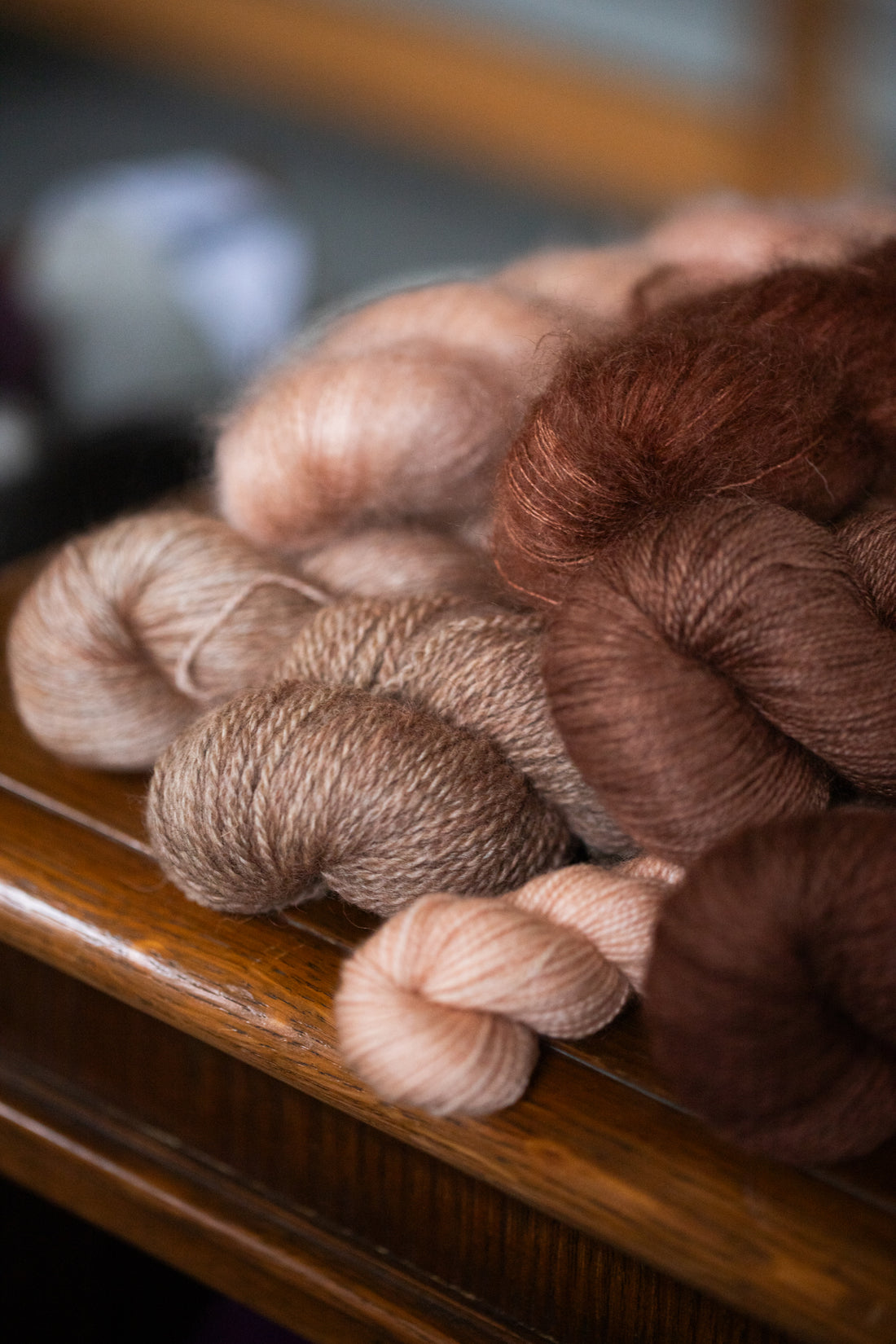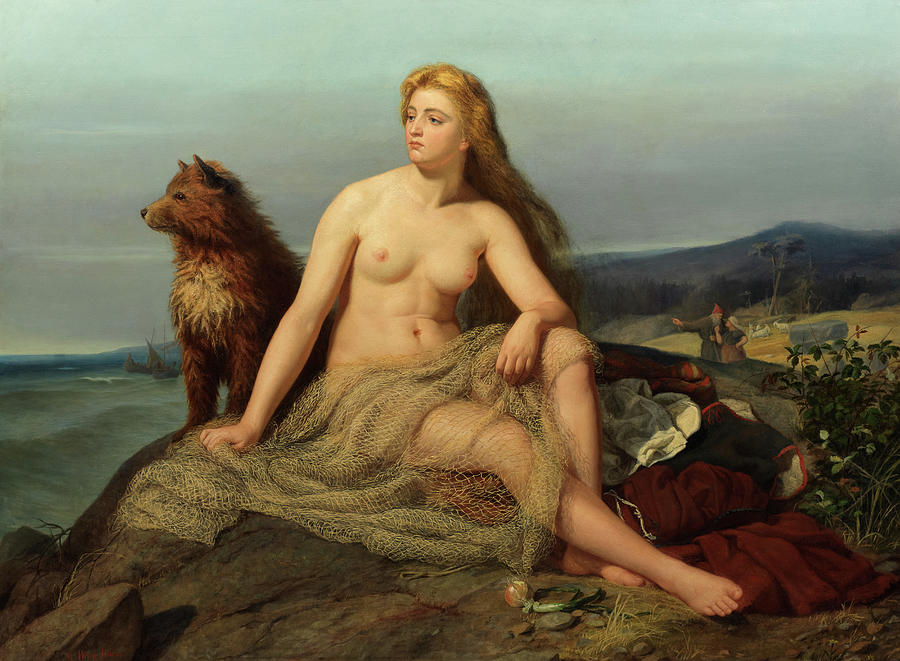
Kvast & Kraka
It's Maundy Thursday here and while this day is best known for being the day when Jesus ate the last supper with his disciples, in Sweden we talk a whole lot about witches today. Maundy Thursday is, in Swedish folklore, the day when all witches ride their brooms to Blåkulla, the blue hill, to have an orgy with the devil. They returned back home on Easter, when people lit big bonfires to ward them off as they flew by.
On this day, it's time to reveal two new colourways for Sägen yarn, my hand dyed yarn line. So without further ado, here's Kvast and Kraka!

Kvast is the deep chestnut bron on top, and Kraka is the mild peachy on at the bottom. Let me tell you all about their names!
Kraka is a woman from the Norse mythology. She was given the name Aslög by her parents, Sigurd Fafnesbane and Brynhild, but when her parents died she was taken in by Brynhild's stepfather who built a big harp to hide her in. He was in turn killed for his riches (including the harp) by a Norwegian couple, and when they discovered Aslög in the harp, they adopted her and gave her the more inconspicuous name Kraka (a version of "kråka", which means "crow" in Swedish) to hide her noble heritage. Even if her new parents made her wear dirty clothes to hide her looks, her beauty did not go unnoticed by the warrior Ragnar Lodbroke. Even though Ragnar was enchanted with her appearance, he wanted to test her wit before marrying her. He asked her to come to his ship neither clothed or unclothed, neither full nor hungry, and neither alone nor in anyone's company. Kraka showed up the following morning wearing a fish net, with an onion in her mouth and a big brown dog by her side.

Aslög (1862) by Mårten Eskil Winge, from the National Museum of Sweden
The colourway Kraka is a sweet, light peach tone. It's not pink and not orange but sits somewhere just in between, which makes if a beautiful companion to both warmer and cooler colours. On the white bases Ratatosk, Mermaid and Basilisk, it's bright and fun, and on the grey bases Fe, Light Fe and Borametz, it takes on a more golden, subdued hue. It offers quite a bit of variegation, especially on the diva Mermaid (with 50/50 silk/merino) where colour strikes faster than lightning, which makes it lively and great for combining with the other colours Sägen colours.
The second new colour Kvast has a bit more mundane name - "kvast" simply means "broom" in Swedish. It's a very old word with roots in Old Swedish (fornsvenska), related to "kvist" which means twig. The broom was of course an important tool in every house, used for cleaning and sweeping, but it's also significant in folklore. As I began this text with saying, the broom was the tool on which witches rode to Blåkulla before Easter. Sometimes the tangle of branches on the silver birch caused by the fungus Taphrina betulina is called "witches broom", and in olden days in Sweden one could hang this over the stables to keep the mara (a nightmare creature) away from the horses and cattle. The broom also shows up in one of my favourite stories, the one of Baba Yaga - an old woman who lives in a hut on chicken legs (another Sägen name!) and rides through the forest in a mortar, steering it with a broom or pestle.
Even though the broom is used for sweeping and cleaning daily, it takes on a more important role on holidays in Swedish folklore. It is said that if you sweep your house well on Shrove Tuesday, you will have no weed in your garden that following summer. But don't sweep on Christmas day - you'll either end up sweeping away all next year's happiness, or with floors that will never be clean again no matter how much you sweep them!

Baba Yaga (1900) by Ivan Bilibin
The colourway Kvast is a warm, rich brown with lots of golden and red shades in. It shifts a bit depending on the light, ranging between chestnut and chocolate brown. It also makes me think of dark tree bark, like the smooth on the cherry tree or the rough on the pines. As always, the result is different on the white bases compared to the grey ones, where the white are clearer and brighter and the greys more subtle and darker. Kvast is a lovely colour on it's own and will look very good in a palette of warm colours.